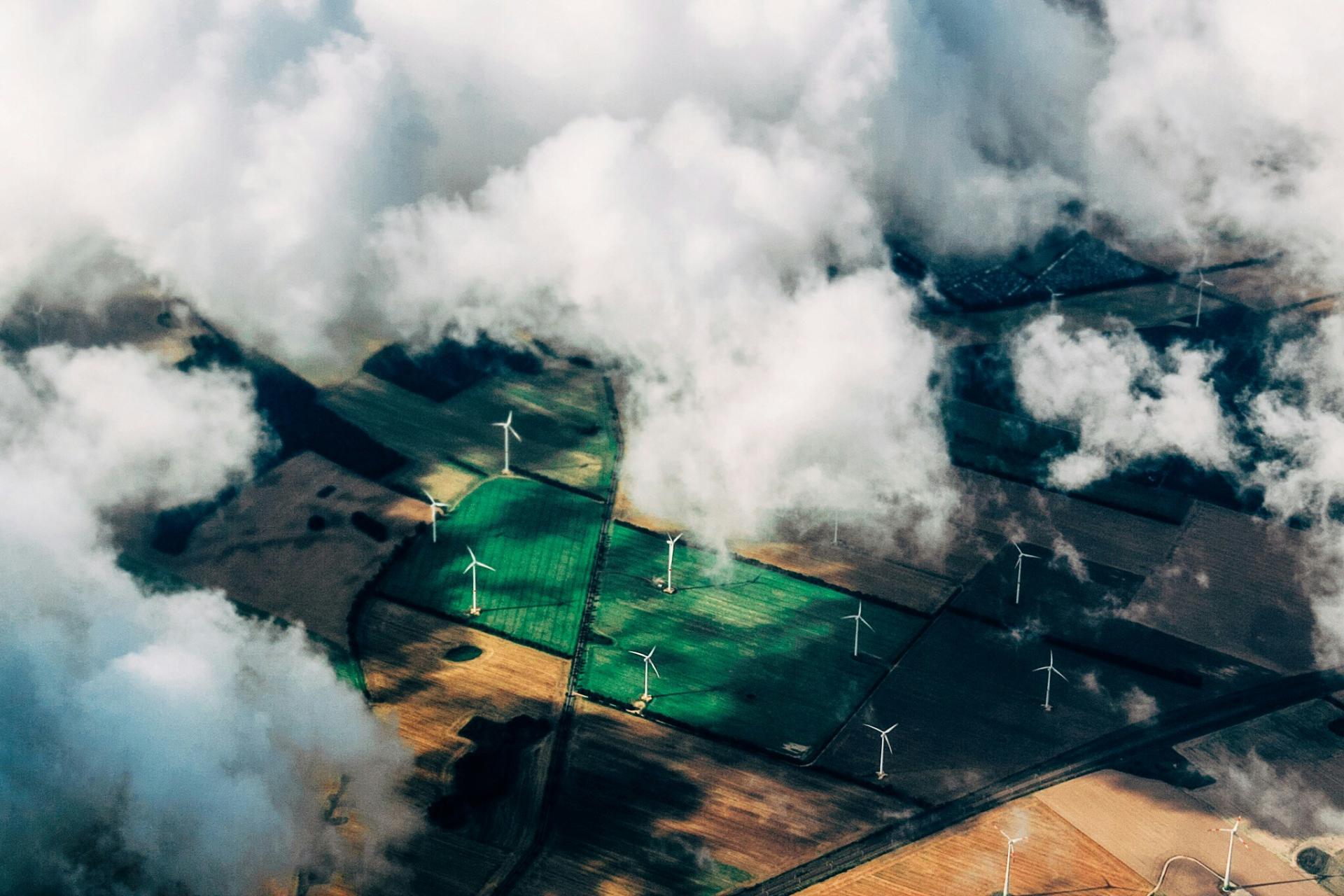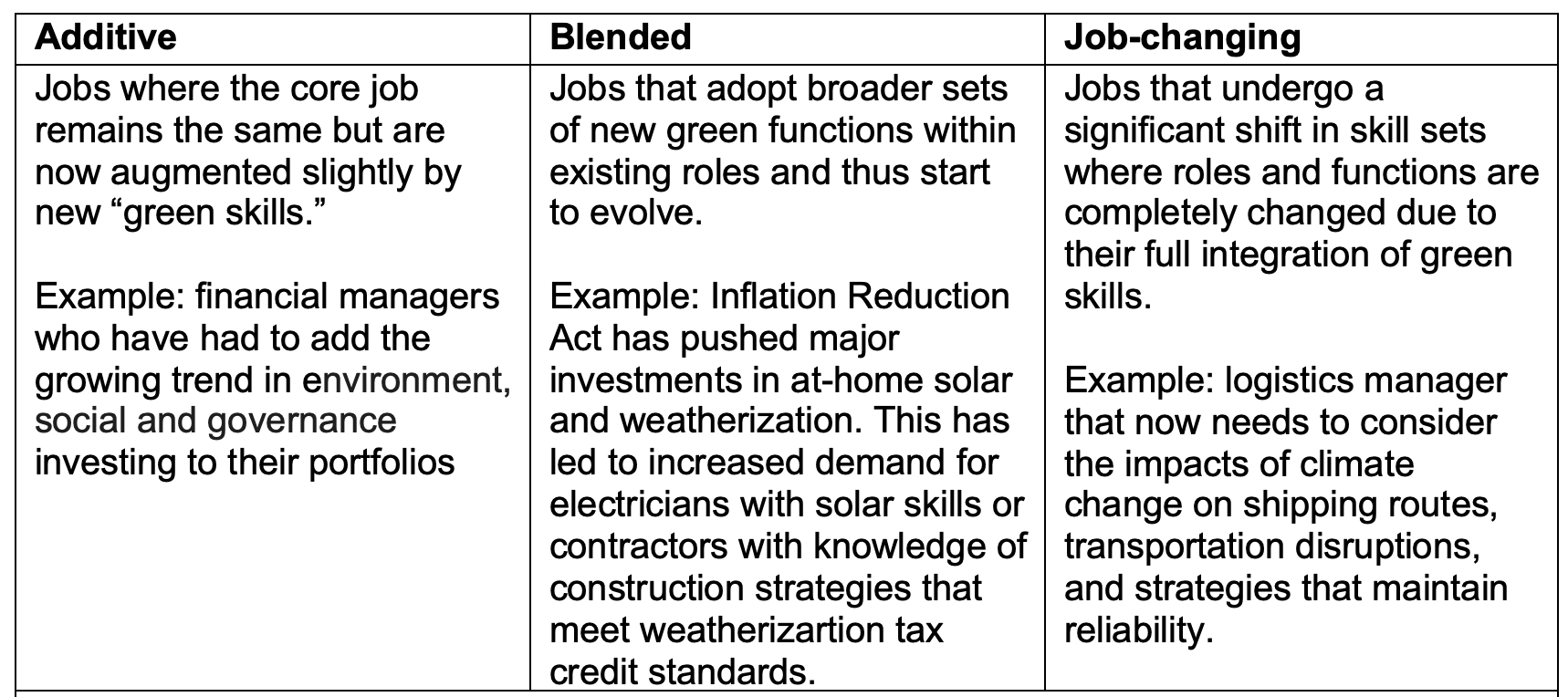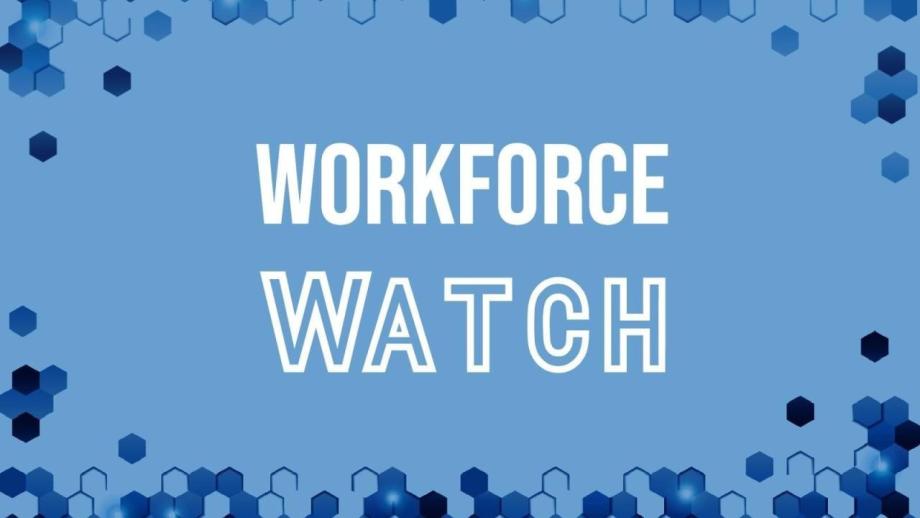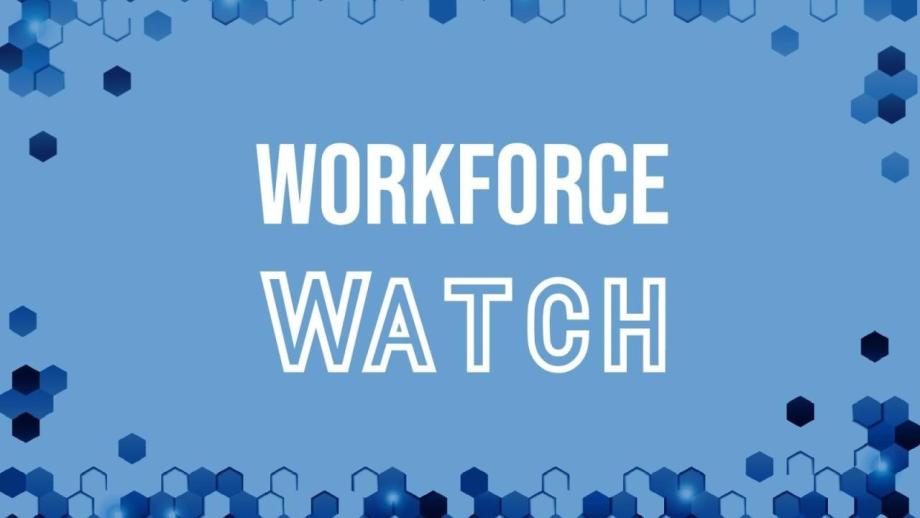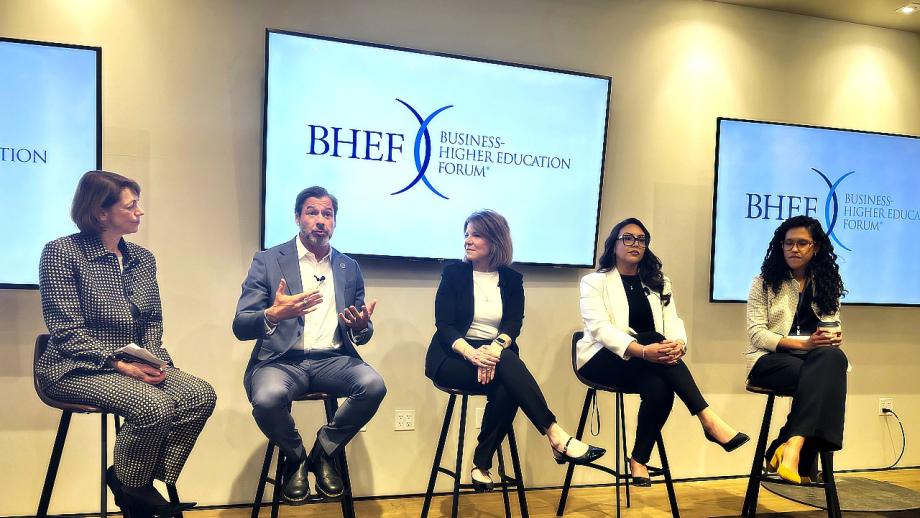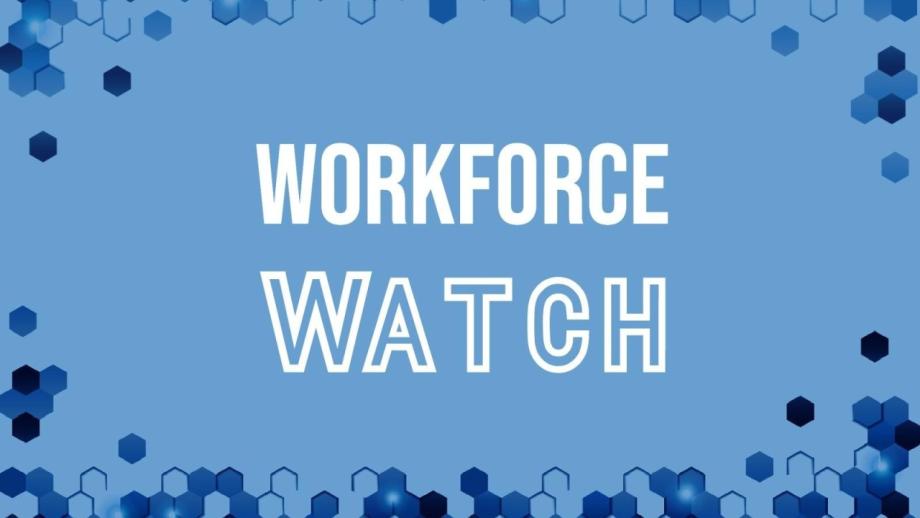The Green New Deal Is Bringing Jobs and Skills into Existence
The term “green skills” isn’t a new one. But its presence as a driver for policy, workforce investment, job demand, and higher education alignment is roaring back. The implications of today’s movement are more wide reaching across sectors, occupations, and impacted skills with significant resources and new challenges for business leaders, higher education, and regional policymakers compared to past investments. With more than $1.5B in federal funding being infused into clean tech and clean tech-adjacent jobs, these changes also represent a unique opportunity for innovators and leaders to capture the momentum, leverage a record wave of resources, and deploy long-lasting, sustainable partnerships (pun intended) that yield benefits for businesses, workers, learners, and the communities they serve.
Changing the Green Skills Conversation
Historically, policy leaders have looked to workforce development strategies as a way to negate the human impact of transitioning from a legacy technology such as coal-fired power to a more modern one such as solar. For example, in 2015, the Obama Administration launched Solar Ready Vets to increase the use of solar energy and decrease American dependence on carbon-based energy. The program aligned veterans, industry-recognized credentials, and the government’s need for clean energy on its own assets, such as military installations, to strengthen the solar market, establish a training ecosystem, and create a pool of talent ready to deploy clean energy. The program, like many at the time, was a closed-system model. First, investors and policymakers identified a legacy technology. Next, they committed to a plan to retire and replace the technology. Finally, they designed and deployed a workforce solution to (hopefully) align workers with new demand, often incentivized through existing infrastructure projects. While these strategies can be productive for ad hoc initiatives or selected communities, they don’t quite meet the current moment: massive structural re-alignment for a new clean national economy.
Green Skills Are Increasing in Demand Nationally and Regionally
Today, we know that the green jobs revolution is broader and deeper than ever.
Our analysis of Lightcast job postings demonstrates that nearly 1,000,000 jobs requested some variation of clean energy skills over the past year, a nearly 33% increase since the same period in 2018. Job listings are showing more and more explicit demand for skills like “clean energy” (+148% increase), air quality (+125%), solar energy (+105%), and water energy (+102%). Meanwhile, “climate change” as an explicit skill request has surged in demand by nearly 400%. Certainly, some of this growth may be because employers didn't have the taxonomy to discuss green skills in order to solicit the skill through a job posting, or because the skills simply didn't “exist” in 2018. However, the sheer growth nationally shows how deep and cross-cutting green skills demands are and will exponentially affect jobs in the future.
As we continue to see dispersion of green skills across sectors and occupations, a recent report from our colleagues at Jobs for the Future and Burning Glass Institute offers framing for how to consider the impact of green skills across three jobs based on whether it is additive, blended, or job changing.
Credit: Jobs for the Future and Burning Glass InstituteA National Imperative with Regional Distinctions to Develop Green Skills
As we look across the country, we can see just how many unique regional economies and industries are being impacted by the influx in green skills demand by looking at three states:
- California, a state that has long operated under a “green” culture
- Iowa, a major manufacturing and ag-tech hub
- Maryland, home to a massive public sector workforce for its own state operations, federal agencies, and as part of the nation’s third-largest MSA (Washington-Baltimore)
Key Regional Sectors with Demand for Green Skills
Business-Higher Education Forum Analysis, Source: Lightcast data, 2024
California’s Professional Services Sector Is Demanding Green Jobs
In California’s labor market, one of the sectors that we see notable increases in the demand for green skills is in professional scientific and technical services areas, including jobs like project managers, engineers, and environmental planners and scientists. In 2012, California had the highest number of green jobs in the country, boasting roughly 338,400 jobs or 2.3% of the state’s total employment share. Since then, we have seen continued growth in demand for green skills across sectors including 13% growth in the professional services sector. Higher education in the state has been on the forefront for years. For example, California Polytechnic State University has been a leader in the sustainability space through academic programs like their Environmental Management and Protection major, research, and institution wide initiatives, like their 4.5 MW Gold Tree Solar Farm that generates 11,000,000 kWh per year and is used for applied research and classroom projects. Cal Poly earned a STARS Gold rating from the Association for the Advancement of Sustainability in Higher Education with a score of 75.14% in 2023.
Iowa Is Seeing a Green Manufacturing Boom
In Iowa, manufacturing has long been one of the state’s leading industry sectors, and we see a major increase in green skills demand. As manufacturing firms and their supply chain partners quickly move to electrification—for regulatory, economic, or market share reasons—green skills are growing. What may be surprising, though, is the scale. In a comparison of job postings from 2018-2019 with postings from the same period in 2023-2024, we see a 31% increase in number of manufacturing jobs in Iowa that request some green skills. Across the sector, manufacturers are listing new green skills for job safety specialists, technicians, and electrical and mechanical engineers. At the same time, more “traditional” green jobs are also booming. As Mak Heddens of PowerUp Iowa notes, “Iowa has a greater share of wind energy jobs per capita than any other state in the nation,” and the state is also a major ethanol fuel provider with anticipated job impacts coming in the near future.
Maryland Is Deploying Public and Private Investments
In Maryland, the state has deployed an aggressive combination of public and private investments to secure and accelerate wind energy as a key driver of energy production with an anticipated $3B in economic impact over twenty years for the Baltimore/Central Maryland region alone. Along with those jobs, the state and its counties have deployed an aggressive growth strategy for hiring state resources to analyze and administer clean energy programs and integrate sustainability principles into jobs such as urban and transportation planners, environmental scientists, and state policy analysts. These efforts are on top of the thousands of jobs expected to be delivered through major initiatives like the state’s $23M Good Jobs Challenge investment into off-shore wind jobs.
Building Pathways into Green Jobs Requires Collaborative and Tailored, Yet Scalable Solutions
Today, the proliferation of green skills comes with a series of new drivers: new market demand for skills, unprecedented accelerators from industrial policy, excellent timing for an industry well-known for high job quality, and low barriers to entry.
Recent analysis from Brookings emphasizes that the Infrastructure Investment and Jobs Act and Inflation Reduction Act are pumping $1.25 trillion across a variety of projects over the next five to 10 years. And this doesn’t even begin to include the green skills needed for the anticipated 642,000 manufacturing jobs expected to be created by the CHIPS and Science Act nor the emerging impact of the $3B in American Rescue Plan Act funds invested into clean energy projects through the Commerce Department’s Good Jobs Challenge and Build Back Better Regional Challenge, among other included investments. While green jobs were already rapidly growing, recent federal investments have sent them into overdrive. However, with record funds, comes record challenges for collaboration at the regional level between employers, higher education, and community partners.
The Opportunity Ahead
With a major economic growth opportunity under way, forward-thinking partnership practices have never been more important in closing record talent gaps by activating wider swaths of the workforce. The U.S. Department of Energy has highlighted the need to “standardize education and training” for clean energy demand and to “connect the dots between education, training, entry-level jobs, and long-term careers in the clean energy sector by aggregating resources at regional scale.” This leaves a major opportunity for business-higher education partnerships to take a lead in regional talent development in the clean tech solutions. Here are four ways to do so:
- Establish a Regional Clean Energy Talent Map: With the wide variety of green skills applications, it’s critical for regions to create a shared understanding of their green skills future. Through smart use of customized labor analytics, businesses and higher education institutions have a unique opportunity to define how the growth of green skills in their leading-edge sectors can be used to enhance their region’s competitive economic advantage—similar to how BHEF helps its members analyze major emerging skills and their anticipated impact on the workforce.
- Activate Sector Partnerships for Shared Vision: Sector partnership models can help businesses, higher education, and their supportive services networks come together to fully activate their workforce and recruitment efforts. Anchored with a strong intermediary and using a refined, evidence-based process, these partnerships can help ensure clear understanding of regional data needs and then align their regional efforts to meet the unique demands of their green skills ecosystems. In BHEF’s work, we’ve seen similar “cross sector” challenges with emerging demand for data analytics, cybersecurity, and artificial intelligence benefit from a robust methodology and dedicated staffing from a regional or national partner to get momentum going.
- Launch Purposeful Partnerships for Equitable, Demand-Aligned Pathways: As green jobs evolve, and disperse across most occupations and industries, business and higher education leaders can create equitable and responsible green skills training and literacy that is accessible to all. Through purposeful partnerships, business and higher education can work together to design equitable talent pathways aligned to in-demand roles similar to how we’ve helped Business Roundtable member companies create equitable regional pathways through higher education as part of our national Workforce Partnership Initiative.
- Refine and Scale National Best Practices: Industry sectors and communities across the country are designing innovative programs to meet the influx of demand for green skills. Federal investments created the resources to bring these programs to life, but it will be crucial to share best practices to refine and scale the successful efforts nationally. Networks like the Business-Higher Education Forum’s member and national collective of strategic partners can enable early-adopters for promising practices to better export, refine, and enhance opportunities for workers and learners across the country, much like how our member partner Accenture has done through the Chicago Apprentice Network’s focus on fintech and professional services roles as it scales and replicates to cities across the country.
The current moment creates an unprecedented opportunity to close immediate workforce gaps for businesses, connect learners to high-quality green and green-enabled jobs, and create lasting sustainability benefits for the country. It just needs the right leaders with the right vision and ready-to-deploy tools to get there.
If you’re interested in learning more about how the impacts of green skills in your community are impacting your labor force—and early insights into how you, your business, and your regional higher education partners can activate their collective power to capture the economic benefits of the green skills movement for your workforce—email Frank Avery at frank.avery@bhef.com.
